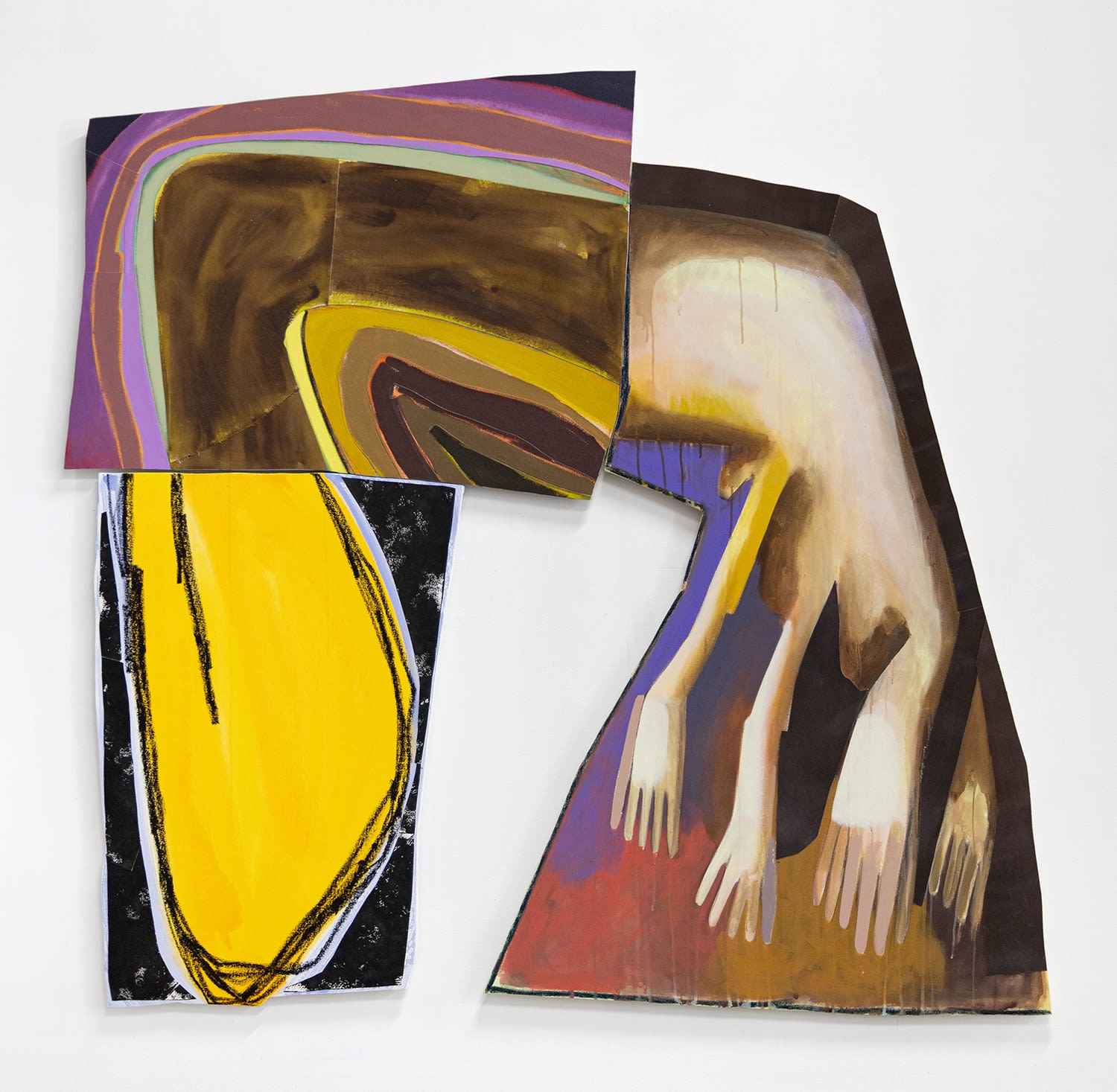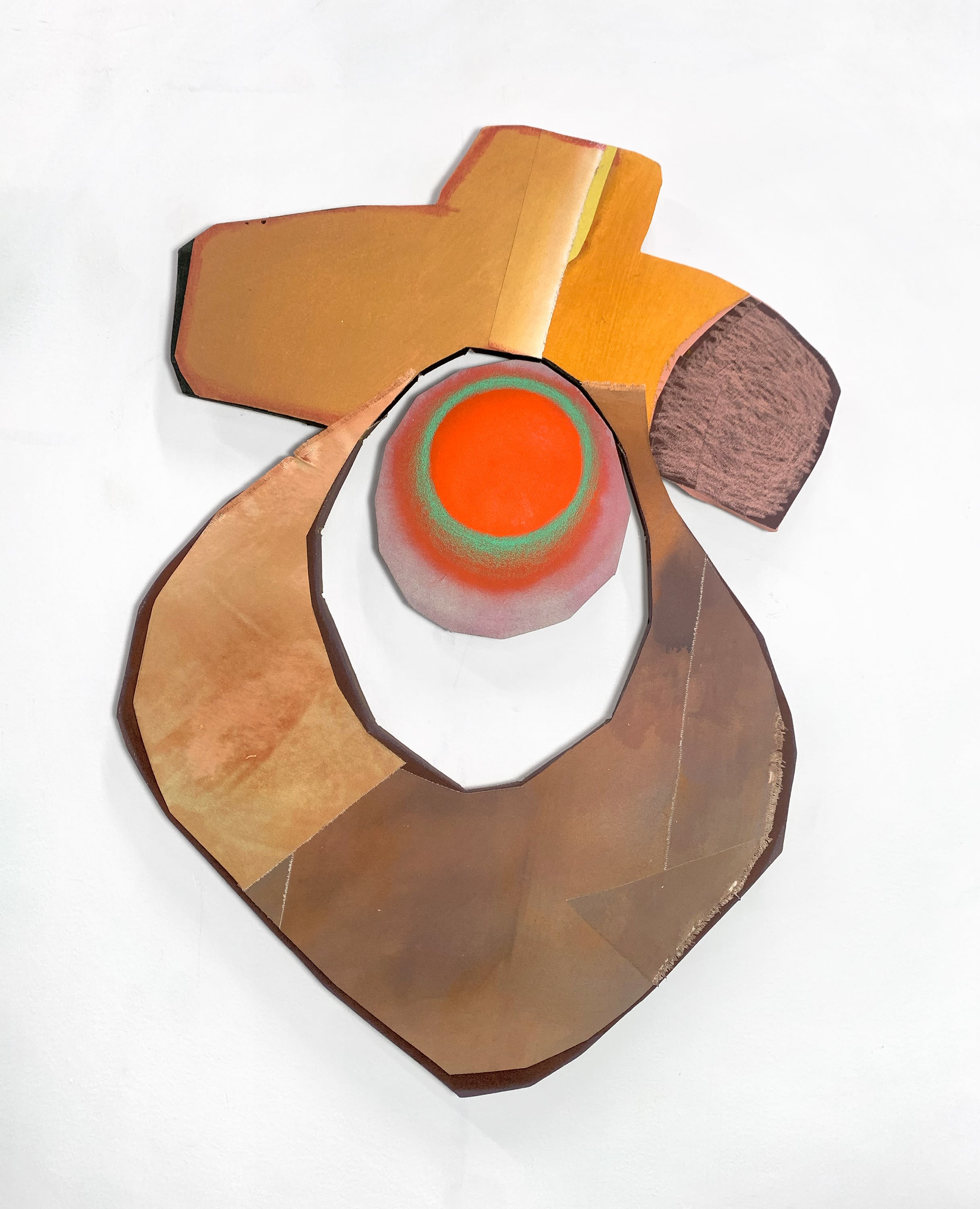The evolution of Justine Hill
It is a pleasure to watch an artist evolve and see surprising changes, as in the case of Justine Hill with her current exhibition “Omphalos” at Dimin Gallery. Over the course of four solos, elements of her work have remained consistent. These include the cut-out shapes that jostle to fit together, and the color that complements (or contradicts) abutting forms. Hill’s earlier work has been likened to the masterful Elizabeth Murray’s. The comparison was apt enough insofar as she, like Murray, worked on irregularly shaped canvases, but it didn’t seem to go much deeper than that until now. Hill still employs shaped canvases, and has now incorporated figuration into the cut-outs, reinforced by earth tones. Murray, too, would sometimes begin with a tangible and recognizable form – that of a cup or a painter’s palette, for instance – and in the painting process abstract it into a reborn cognate. In her whimsical choice and transformation of shapes, Hill generates kindred charm and humor.

In Bend 2, three concentric painted curves loosely form what looks like a lowercase “n” in one segment of the painting. In the segment directly below it is a dominant primary yellow shape – a truncated oval – accented by a heavy black outline. The line, but not the color, of each of these two segments flows smoothly into that of the other. Extending to the right and downward from the top segment is a roughly triangular shape presenting an image resembling a bent torso with four arms, each bearing varying numbers of fingers. The piece could be read as a visual narrative of Hill’s evolution as a painter. The large dominant yellow recalls a device she used in earlier works, while the shapes culminate in plainly anthropomorphic if weirdly customized forms.

Other elements of the work suggest Hill’s thought processes. Collaged strips of canvases pile up on painting surfaces as if they were remnants of other paintings that may have failed, or even stripes used to test for color, bringing to mind Angel Otero’s work. Hill’s painting Unblinking features two large semi-circular shapes in the middle, each containing small, collaged rectangles densely arrayed in a grid. Four dark edges frame this complex out to the edge of the canvas. The painting’s surface alternates between negative and positive space, and between the brown base color, the collaged items, and the lighter wall color. The two semi-circular shapes could represent the hemispheres of the human brain, the rectangular units digital code.

As a matter of structure, Hill establishes a dynamic interplay between the rough, torn, irregular pieces of canvas and the asymmetrical shapes that make up the paintings. Both components are nicely controlled and well-behaved. Given this baseline stability, it makes sense for these paintings to be displayed at irregular heights, as they are, with some pieces hung high, some low, larger ones squarely in the vertical middle of the wall. This keeps viewers’ eyes moving and their minds wondering – much, it would seem, like the artist herself.
“Justine Hill: Omphalos,” Dimin Gallery, 406 Broadway, 2nd Floor, New York, NY. Through November 25, 2023.
About the Author: Artist and educator Riad Miah was born in Trinidad and Tobago and lives and works in New York City. He has exhibited with Lesley Heller Workspace, Rooster Gallery, and Sperone Westwater Gallery. His 2022 solo show was at Equity Gallery in New York.

